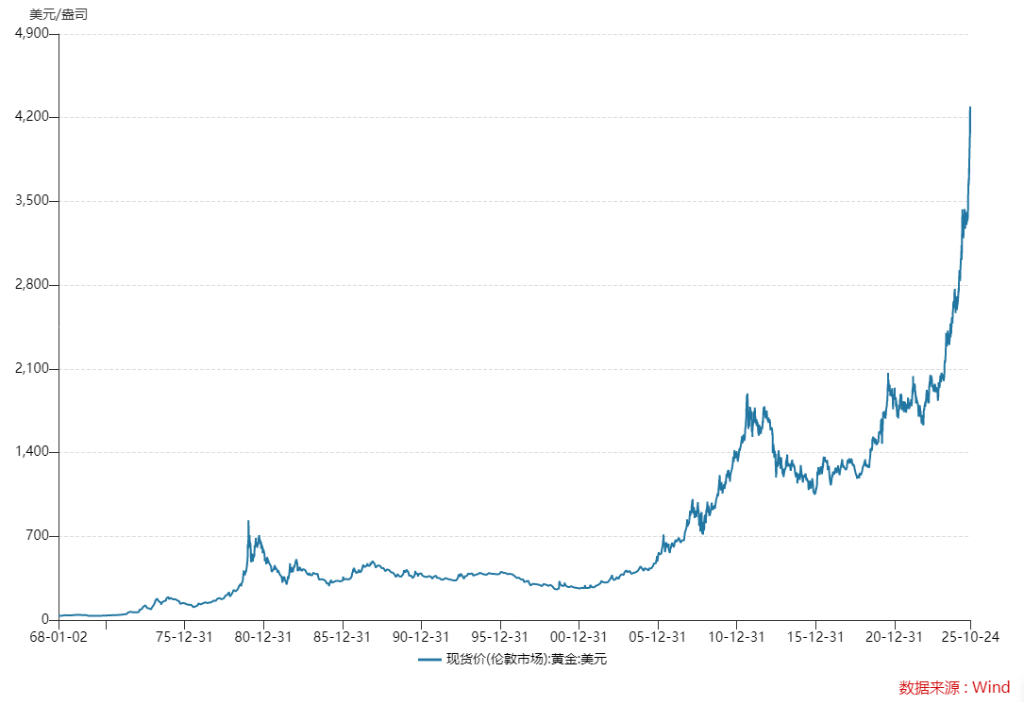The widely anticipated gold market crash has occurred, and now everyone is waiting to buy at the bottom?

Tuesday’s gold market crash not only failed to trigger panic but also ignited a surge of enthusiasm among global retail investors rushing to “buy the dip,” while the core views of most precious metals analysts remained unchanged. However, analysts such as Michael Hartnett, a strategist at Bank of America, have raised doubts, arguing that the logic of the “devaluation trade” supporting gold prices is not solid.
This week, the gold market witnessed a ‘widely anticipated’ collapse. On Tuesday, prices plummeted 6.3% during trading, marking the largest single-day decline since 2013.
However, Tuesday’s gold market crash seems not to have triggered panic; instead, it has sparked a wave of enthusiasm among global retail investors seeking to “buy the dip,” while the core views of most precious metals analysts remained steadfast.
 Meanwhile, analysts such as Bank of America strategist Michael Hartnett raised counterarguments, questioning the robustness of the ‘depreciation trade’ narrative that has supported gold prices, suggesting that the foundation for shorting the dollar and going long on gold may not be as solid as imagined.
Meanwhile, analysts such as Bank of America strategist Michael Hartnett raised counterarguments, questioning the robustness of the ‘depreciation trade’ narrative that has supported gold prices, suggesting that the foundation for shorting the dollar and going long on gold may not be as solid as imagined.
A ‘Predictable’ Flash Crash
In the eyes of professionals, this pullback was not surprising.
On October 6, Nicky Shiels, head of research at precious metals refiner MKS Pamp SA, warned clients that gold was ‘a crowded trade overstretched on all technical indicators.’ The day before the crash, when gold prices surged toward a record high near $4,400, Marc Loeffert, a trader at Heraeus Precious Metals, also cautioned that the market was ‘becoming increasingly overbought.’
In fact, data from the New York Mercantile Exchange (Comex) shows that interest in gold put options relative to call options has risen to one of the highest levels since the 2008 global financial crisis.
Notably, this decline in gold prices seems to lack a clear external catalyst, with some traders attributing it to profit-taking by hedge funds or selling by banks. Moreover, the turbulence was almost entirely confined within the precious metals market, leaving major asset markets such as global equities, U.S. Treasuries, and crude oil largely unaffected on the same day.
Retail investors flood in, while professional institutions remain bullish.
From Singapore to the United States, gold dealers have widely reported a buying frenzy, as global individual investors appear to view the price decline as a rare buying opportunity.
Pete Walden, deputy CEO of Singapore-based dealer BullionStar, said that Tuesday was the busiest day in the company’s history, with queues forming before opening and significantly more buyers than sellers.
Stefan Gleason of U.S.-based Money Metals Exchange also noted that he was overwhelmed by bargain hunters coming in to buy.
Meanwhile, the core views of most precious metals analysts remain unchanged.
They generally believe this is a ‘healthy correction’ to squeeze out market bubbles. Nicky Shiels, head of research at precious metals refiner MKS Pamp SA, stated this week:
“Bull markets always require healthy corrections to clear out froth, ensuring the longevity of the cycle… Prices should consolidate and return to a more robust bullish trajectory.”
Gregory Shearer, an analyst at JPMorgan, stated in a report this week that profit-taking by investors will be offset by ‘buying on dips’ from other physical buyers, including central banks, ultimately limiting the price decline. Shearer predicted that by the fourth quarter of next year, the average gold price would exceed $5,000.
In retrospect, the core drivers of this gold bull market stem from several factors: first, the large-scale purchases by central banks, a trend that notably accelerated after the sanctions on Russia’s central bank in 2022; second, deep concerns among global investors about the unsustainable levels of sovereign debt; and most recently, the surge driven further by an influx of ordinary individual investors.
Contrarian View: The ‘currency depreciation’ logic supporting gold prices is not robust.
Despite the optimistic market sentiment, some analysts have also identified warning signals.
Michael Hartnett, a strategist at Bank of America, stated that gold has surged by 60% in 2025, with inflows over the past four months even surpassing the total of the previous 14 years.
On a macro level, Hartnett raised doubts about the logic of the ‘devaluation trade’ supporting gold prices, considering it not robust. He provided three reasons: first, the yield on 10-year U.S. Treasury bonds is below 4%; second, the U.S. achieved a budget surplus in September; third, the U.S. Dollar Index (DXY), which measures the strength of the dollar, has consistently failed to break below the low point seen in April. Collectively, these factors suggest that the foundation for shorting the dollar and going long on gold may not be as solid as perceived.

Even Gregory Shearer, a JPMorgan analyst who is bullish on gold, listed ‘central banks slowing their pace of purchases’ as the biggest risk to his bullish forecast in a report.
Additionally, the story of the previous peak in gold prices in September 2011 serves as a cautionary tale for the current situation. At that time, after gold hit a historical high of $1,921, it retreated. Analysts attending the London Bullion Market Association (LBMA) annual meeting were almost unanimously bullish. However, it took gold a full nine years to return to that high.

Editor/Jeffy




